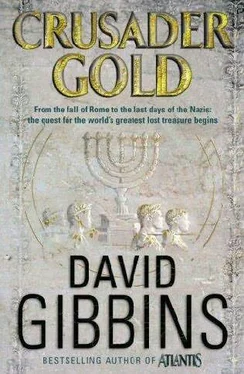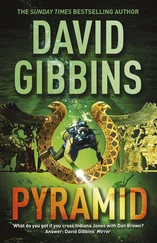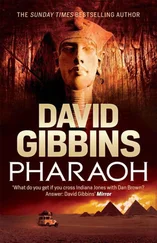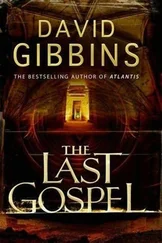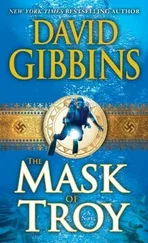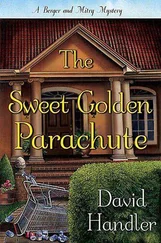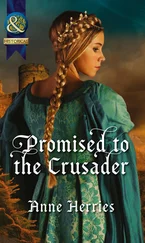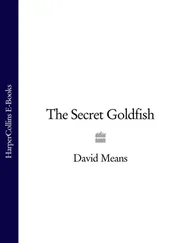David Gibbins - The Crusader's gold
Здесь есть возможность читать онлайн «David Gibbins - The Crusader's gold» весь текст электронной книги совершенно бесплатно (целиком полную версию без сокращений). В некоторых случаях можно слушать аудио, скачать через торрент в формате fb2 и присутствует краткое содержание. Жанр: Прочие приключения, на английском языке. Описание произведения, (предисловие) а так же отзывы посетителей доступны на портале библиотеки ЛибКат.
- Название:The Crusader's gold
- Автор:
- Жанр:
- Год:неизвестен
- ISBN:нет данных
- Рейтинг книги:3 / 5. Голосов: 1
-
Избранное:Добавить в избранное
- Отзывы:
-
Ваша оценка:
- 60
- 1
- 2
- 3
- 4
- 5
The Crusader's gold: краткое содержание, описание и аннотация
Предлагаем к чтению аннотацию, описание, краткое содержание или предисловие (зависит от того, что написал сам автор книги «The Crusader's gold»). Если вы не нашли необходимую информацию о книге — напишите в комментариях, мы постараемся отыскать её.
The Crusader's gold — читать онлайн бесплатно полную книгу (весь текст) целиком
Ниже представлен текст книги, разбитый по страницам. Система сохранения места последней прочитанной страницы, позволяет с удобством читать онлайн бесплатно книгу «The Crusader's gold», без необходимости каждый раз заново искать на чём Вы остановились. Поставьте закладку, и сможете в любой момент перейти на страницу, на которой закончили чтение.
Интервал:
Закладка:
“Hard to believe Iona lies more than two thousand miles to the east.” Jeremy’s tousled head appeared through the entranceway, and he stood beside Jack rubbing his eyes and cradling a coffee. “But it looks much the same, doesn’t it? This would have been familiar terrain to the Vikings.”
“This must be home turf for you too,” Jack said with a twinkle in his eye.
“My mother was Canadian, from Nova Scotia,” Jeremy replied. “Visiting this place as a kid was what inspired me to study Norse archaeology. It’s amazing how few people come here, even thought it’s a UNESCO World Heritage site. Read some history books and you’d still think the European involvement with North America began with John Cabot in 1497.”
“But the Vikings didn’t stick around.” Costas had caught Jeremy’s words as he stacked their bedding outside the longhouse, and he came over to join them. “I thought L’Anse aux Meadows was more an outpost, a seasonal camp.”
Jeremy nodded. “If we go by the archaeology alone, this place was occupied for a few seasons at most, then maybe visited sporadically for a few years after that. The three longhouses could have accommodated upwards of a hundred people, so maybe there was an attempt to establish a permanent settlement. There were women here too, and livestock. But it didn’t last. We’re talking around AD 1000, maybe a little later. Iceland had been colonised from Norway about the end of the ninth century, Greenland by Eirik the Red about a century later, so that’s probably where the settlers here came from. The style of turf house is typical of Iceland and Greenland at that period. Leif Eiriksson was the son of Eirik the Red, as the name implies.”
“They were probably testing the boundaries of their world,” Jack reflected. “The Phoenicians did the same. The farthest Phoenician outposts date from the earliest period of exploration, and were all short-lived. Mogador in west Africa, Cornwall in Britain. Attractive trading potential, but too far away and vulnerable to last for long. It looks like the same story here.”
“That’s a good model,” Jeremy said, ruffling his hair. “Excavations here in the 1970s revealed lots of evidence for woodworking, for preparing logs and planks suitable for shipbuilding. It’s a little difficult to envisage now, but there were dense forests of deciduous trees reaching right up to these meadows. It would have seemed like a gold mine to the Icelanders and Greenlanders, who had no forests of their own and had to import large timbers from Scandinavia. They repaired their ships here and may even have built new vessels, but most of the timber was probably shipped back to Greenland and Iceland.”
“I’m baffled,” Costas said. “With all that wood, plus great pasturage and fishing, why didn’t they establish a permanent colony?”
“Scraelings,” Jack said.
“Who?”
“The Norse name for the native peoples, the Indians,” Jeremy replied. “It means wretches, which says it all for the Viking attitude. There was quite a large population in Newfoundland at that time, and their war canoes and bows made them more than a match for the Vikings. The archaeology doesn’t give us much to go on, but the sagas tell an ugly story. When Leif Eiriksson first arrived, relations with the natives were tense from the outset. Soon there were confrontations, violent clashes. The occasional murder by one side or the other may have turned to outright war, with more distant bands joining in and the Vikings soon being overwhelmed by sheer force of numbers. They probably had to direct all their energy to stockading this place, to building a wooden palisade around their dwellings. It would have been impossible to tend livestock or hunt and fish, and in their weakened state illness would have been rife. They would have been unable to fell trees and prepare timber for shipment back home, their main reason for being here. The sagas tell us that Leif’s brother Thorvold was killed by an arrow, and that may have been the death knell for the settlement.”
“Sounds like the Pilgrim fathers in America, at Jamestown,” Jack said. “Hemmed in by hostile natives, plagued by starvation and disease.”
“There’s an even darker story.” Jeremy took out a battered paperback from his pocket. “These are the Vinland Sagas, passed down by word of mouth and written down in Iceland in the thirteenth century. They’re difficult to read as history, sometimes contradictory and confused, but the discovery of this site proves they’re based on real voyages. According to the Greenlanders’ Saga, another of Eirik the Red’s offspring, his daughter Freydis, organized an expedition to Leifsbu?ir, ‘Leif’s Houses,’ their name for the Vinland settlement. There were two ships, one with about thirty Greenlanders, the other with about the same number of Icelanders. Once they’d disembarked there was some kind of dispute, maybe involving women, some deep-rooted animosity, that led Freydis and the Greenlanders to run berserk and murder all of the Icelanders in one awful rampage. Freydis herself murdered the five Icelandic women, and probably their children as well. If it truly happened, the dark deed would probably have taken place at night inside one of these longhouses.”
“Blood feud,” Jack murmured, remembering his troubled sleep. “I hope that’s not our most enduring legacy from the Vikings.”
“Do we have firm dates for any of this?” Costas asked.
“The radiocarbon dates look about right for the foundation of the settlement, around AD 1000, with the other expeditions recounted in the sagas taking place over the next fifteen years or so. Freydis’ expedition may have been the last.”
“Until Harald Hardrada.”
“That’s what we’re here to find out.” Jack rubbed his hands in anticipation and eyed the compact chart case that Jeremy had placed alongside their bags. “It’s time we looked at that map again.”
Twenty minutes later they stood on the foreshore a few hundred metres from the archaeological site. Behind them lay the gently undulating meadows that surrounded the Viking settlement, and on either side the low-lying coast swept round the tidal flats of the bay. Beside them two Canadian Coast Guard crewmen were readying a lightweight Zodiac inflatable boat they had carried down from the helicopter. Jack shielded his eyes and looked out to sea. The light was pellucid, with the clarity they had seen in the icefjord, and the breeze carried with it a vestige of the chill air that flowed off the ice to the north even in June. For a moment Jack found himself thinking of the iceberg far away in the fjord, wondering whether it would finally melt somewhere near these shores and put Halfdan to rest on the trail of his companions. He brushed the thought aside and focussed on the low rocky mass visible a few kilometres offshore.
“Great Sacred Isle,” he murmured. “That’s what we came here for.”
“There’s no doubt about the identification.” Jeremy was holding a copy of Richard of Holdingham’s sketch and comparing it to a photocopy from the local Admiralty Chart. “According to Maria, Richard was a painstaking scholar and would have transcribed the map as accurately as he could, probably copying from an original sketch which somehow made its way to him from Greenland.” He suddenly put down the sketch and rushed over to a nearby hummock, where a cloud of steam was rising from a small camping stove.
“So what exactly are we looking for?” Costas asked. “Pottery, coins, the odd rusty battle-axe?”
Jack smiled at his friend. “Not a chance. Eight years of excavation at L’Anse aux Meadows in the 1960s produced exactly four Norse artefacts: a bronze pin, a stone oil lamp, a spindle whorl and a gilded brass fragment. And that was for a community that may have numbered over a hundred, and was here for several years. The Norse picked up what they dropped and didn’t throw away anything. If Harald Hardrada chose to leave something, we may find it. If not, we probably won’t find anything.”
Читать дальшеИнтервал:
Закладка:
Похожие книги на «The Crusader's gold»
Представляем Вашему вниманию похожие книги на «The Crusader's gold» списком для выбора. Мы отобрали схожую по названию и смыслу литературу в надежде предоставить читателям больше вариантов отыскать новые, интересные, ещё непрочитанные произведения.
Обсуждение, отзывы о книге «The Crusader's gold» и просто собственные мнения читателей. Оставьте ваши комментарии, напишите, что Вы думаете о произведении, его смысле или главных героях. Укажите что конкретно понравилось, а что нет, и почему Вы так считаете.
